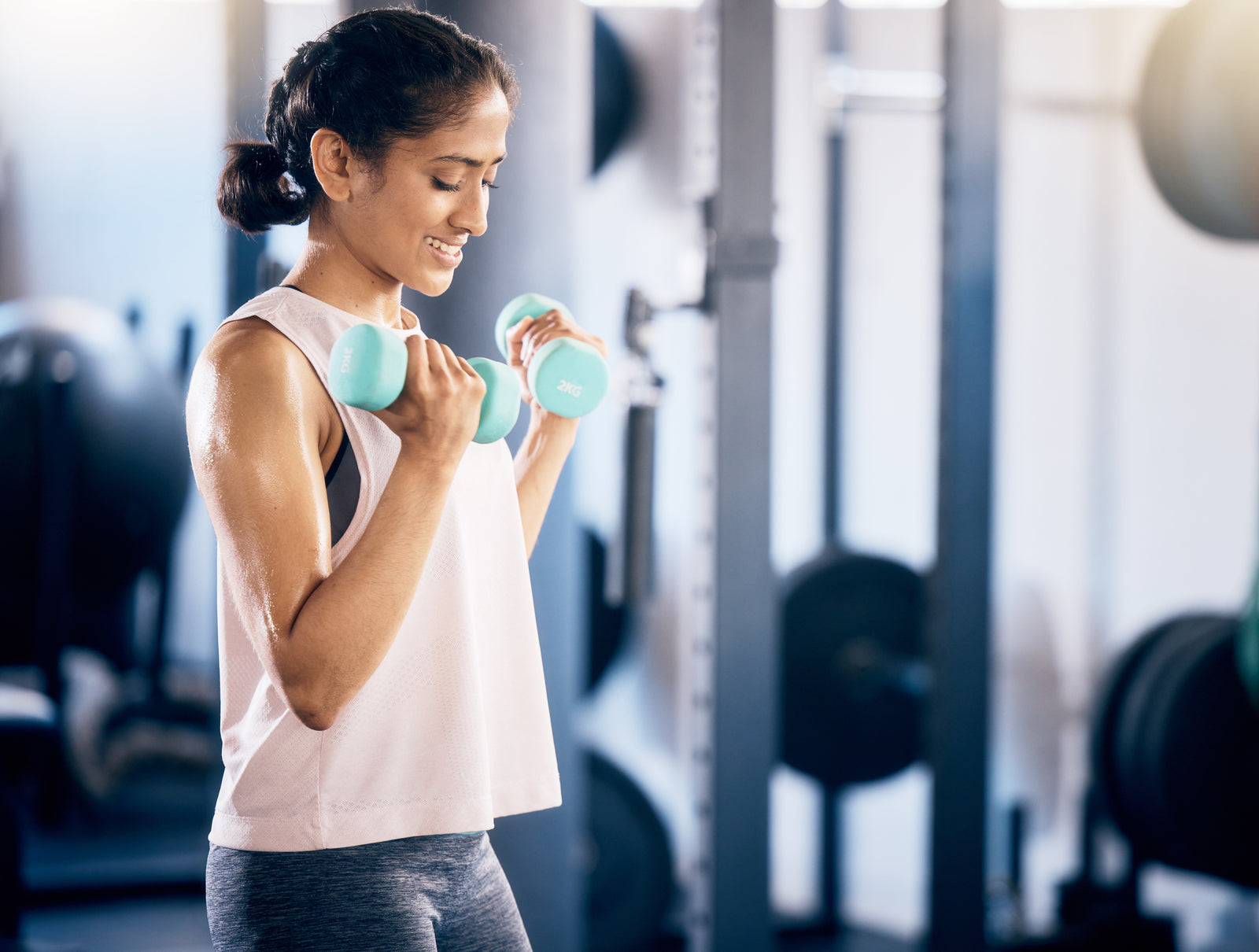
Whatever your age or performance level, weight training offers benefits for everyone. It helps build muscle, strengthen bones, improve balance, and prevent injuries. It can also be very beneficial for individuals with various chronic health conditions. Not only does it affect physical well-being, but mental well-being too.
As we age, muscle mass naturally declines. Starting at age 50, we lose muscle at 1-2% per year, increasing to 3% annually after age 60. This age-related muscle loss significantly raises the risk of injury from frailty and falls, particularly impacting women who are more prone to osteoporosis-related fractures. Additionally, reduced muscle mass is linked to age-related metabolic issues such as obesity and hyperglycemia.
Strength training can address all these concerns. It not only helps build muscle but also has significant mental health benefits. One study found that strength training reduced anxiety by up to 20%, thanks to the release of feel-good endorphins that promote relaxation and optimism.
Building muscle also boosts overall endurance; feeling strong translates to feeling vibrant. Whether you're 20 or 70, it’s never too early or too late to focus on building muscle—your body will thank you for it!
Where to start
You don’t have to invest in a fancy gym membership or even personal training. Determine what kind of weights you feel most comfortable with. You can even mix it up with a combination of:
- Free weights, like dumbbells
- Weight machines at the gym
- Resistance bands
- Your own body weight
- An exercise ball
Choosing Weights
It’s easy and convenient to start your strength training at home.
Start with light weights, and build weight and reps as you go. Depending on age and fitness level, this is generally considered a rule of thumb:
- Light weights: 5 to 10 pounds
- Medium Weights: 10 to 20 pounds
- Heavy weights: 15 to 30 pounds
No Weight, no problem! Pushups, lunges, squats, and planks require no equipment and can be done anywhere.
Learn Basic Moves and Focus on Form
Correct form is critical to avoiding injury. It might be a good idea to schedule one session with a trainer if that is an option at a nearby gym. However, a simple YouTube or Instagram search will lead you to a strength coach that fits your vibe. John Rusin (@drjohnrusin) is a great place to start. He is a physical therapist and leader in the pain-free performance model, blending strength training with clinical-based movement, and creator of Functional Strength Training (FST).
Tip: While working out, use a mirror to check your form!
Fundamental Compound Movements
A compound exercise is any movement that uses more than one muscle group at a time; for example, a squat engages the hamstrings, core, quads, glutes, calf muscles, and hip flexors.
Create a good weight training program that targets the major muscle groups: back, legs, abdomen, chest, arms, and shoulders. Having anywhere from 8 to 12 exercises you are comfortable with is a good idea. You can pick different ones for each workout, but the variety will keep you from getting bored with the “same old routine”!
Here are some basic moves and their targeted muscles:
Dumbbell Lunge - quads, glutes, arms
Squats - legs and core
Deadlift - back, glutes, and hamstrings
Tricep Kickback and Bicep Curl - specific muscles in the arms
Rows - back and biceps
Overhead Press - shoulders and triceps.

Frequency
The safest type of training focuses on progressive increases in intensity. Progressive overload involves gradually increasing weight, number of sets, and repetitions. Just don’t overtrain; rest is essential to prevent injury.
One study found that one set of exercises three times a week was enough to increase strength, skeletal muscle mass, and decreased body fat over 12 weeks. Increasing that to three sets of exercises three times a week resulted in a dramatic boost in results.
Protect Your Body
The correct form is essential, and support products can ensure your form is impeccable and your recovery is optimized. Knee braces provide support and compression, enhancing blood circulation and reducing swelling and the risk of muscle strain. The Copper Fit Knee Stabilizer Sleeve provides:
- Advanced circular knit compression sleeve for maximum support
- The Protective Patella Gel Ring is designed to increase comfort by redistributing knee pressure
- Designed to help provide comfortable movement when bending
- Flexible side stabilizers designed to increase compression support
Protecting the elbow can help limit muscle soreness after a weight-lifting session. The Copper Fit ICE Compression Sleeve combines soothing menthol with compression, which has been shown to improve circulation, temporarily relieve muscle and joint aches and pains, and speed recovery time.
Nutrition
Eating for optimal health always includes a well-balanced diet that contains protein, whole grains, fruits and vegetables, and limited processed foods.
Protein is a priority when focused on muscle building. Muscles are made of protein, so adequate protein is essential to building muscle mass.
No matter your age or fitness level, consider incorporating strength training into your routine for optimal fitness and a strong body that ages gracefully. It’s simple to start, and you’ll feel stronger soon!





